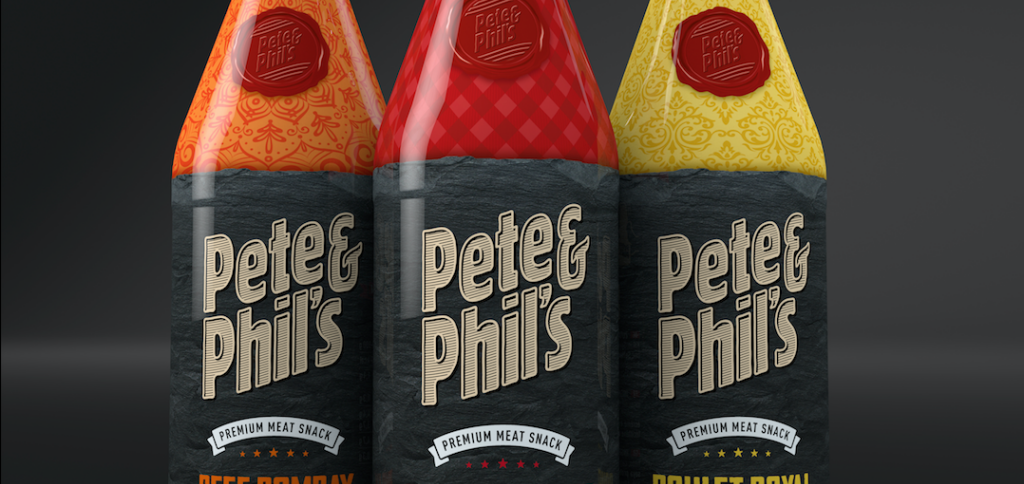Do you like coffee or smoothies? Or maybe you’d prefer some bone broth…

In New York, London and other trendy cities, people are now descending in droves on new hip “broth bars” and ordering a cup of bone broth to go. In Germany, the drinkable bone-broth snack trend has not yet really taken off. But there are some companies here already that are promoting and successfully marketing bone and meat broths as healthy drinks. Is there potential for the nonalcoholic beverage industry to branch out into this new line of business and explore new horizons?
“Brodo” – the trendsetter
The buzz around bone broth began when Italian Marco Canora decided to stop drinking fatty calorie bombs and began serving up hot broths in a cup near the end of 2014 in his shop “Brodo” in New York’s East Village. In no time, he had crowds lining up to sample the new “in” drink, despite the fact that a cup of this broth – made primarily from organic beef and poultry combined with fresh vegetables, herbs, spices, chili oil, fermented beans and ginger – would set back patrons a good eight euros.
So what is this bone broth all about?
What’s so great about New York’s latest “in” drink, which is being heralded as a possible alternative to smoothies and coffee, and is even seen as a sort of medicinal beverage in China? A lot, according to health experts.
First, let’s take a look at what bone broth actually is: a concentrated brew made by cooking down beef or chicken bones in water. It’s essential that the broth simmer for an absolute minimum of two to three hours. But the longer the bones are cooked, the more health-benefiting substances can be drawn out while dissolving the bones entirely.
One of its main virtues is collagen, which is an essential component of bones, teeth, tendons and connective tissue. “Bone broth is also rich in minerals such as calcium and magnesium, which are important for muscles, bones and nerves, as well as trace elements such as silica, which is important for skin and hair,” says Health Coach Nadine Hüttenrauch. One of the particularly important health benefits of bone broth that Hüttenrauch is keen to highlight is its positive effect on the gut: “The harmonizing effect of bone broth on the gut can lead to improved nutrient supply, stronger immune defense and more effective detoxing,” says the health expert.
Overall it’s enough to convince Hollywood stars such as Gwyneth Paltrow, Salma Hayek and Shailene Woodley to convert to this “new cure all,” which can be refined with the addition of various ingredients, such as vegetables, herbs and spices.
Grandma’s got the cure
For most people, bone broth is often linked to their childhood. Many grandmas cooked it and extolled its virtues for dealing with colds and flus. This could go a long way in convincing people to take the leap of faith – and might even open many a door in the future by encouraging a wide range of consumers across the country to give it a go.
So would you rather opt for bone broth?
What’s the bone broth scene like in Germany? Bone Brox, a Berlin-based start-up, took the idea of selling bone broth to go and ran with it, serving up the hot drink during the winter of 2016 at an ice-cream parlor on Weinbergsweg in Berlin.
Founders Konrad Knops and Jin Woo-Bae now market their broths, for which they say they use only the bones of organic free-range chickens and grass-fed cattle, primarily online and through retail. Bone Brox now supplies more than 450 organic stores in Germany, Austria and Switzerland. A pack of six 530-ml jars costs around 50 euros.
Another German player on the organic bone-broth market is Jarmino from Munich. The company sells “Beam” and “Boost”, which are also organic beef and chicken bone broths and which, as with Bone Brox’s products, have been simmered for a staggering 18 hours. The price per 350-ml jar is just under five euros.
Or would you prefer a “premium meat snack”?
What’s interesting is that even butchers seem to be cashing in on the trend for meaty drinks. Master butcher Peter Klassen from Temmels in the district of Trier-Saarburg, for example, has been selling chicken- and beef-based drinks under the brand name Pete & Phil’s since 2017.
Unlike the previously mentioned companies, he sells his products in bottles and not in preserving jars, which really reinforces the idea that this is a drink. He’s even blazing a trail in terms of his product’s name and its ingredients. He markets it as a “premium meat snack.”
According to Klassen, the meat-based drinks are made from meat, fresh vegetables and mixtures of herbs and spices. Klassen currently fills between 1,500 and 2,500 0.33-liter bottles a day and plans to increase capacity to 3,000 bottles a day by the middle of the year. Three bottles will set you back just under 12 euros. Klassen says that interest in these “liquid meals” is “huge,” even though his meat-based drinks are very polarizing: “People either love the idea or they hate it, there’s nothing in between,” says the master butcher.
Will the drink go mainstream?
Only time will tell if bone broths and meat-based drinks will ever go mainstream. But what the new segment does have in its favor is the fact that the products boast numerous health benefits. Besides, making your own broth at home is extremely time-consuming, so it only seems logical that consumers will be more than happy to opt for brand-name products they trust if, in fact, they find this “in” drink appealing. In any case, it’s high time the beverage industry gave this product – which is often claimed to be an alternative to smoothies – some thought.
